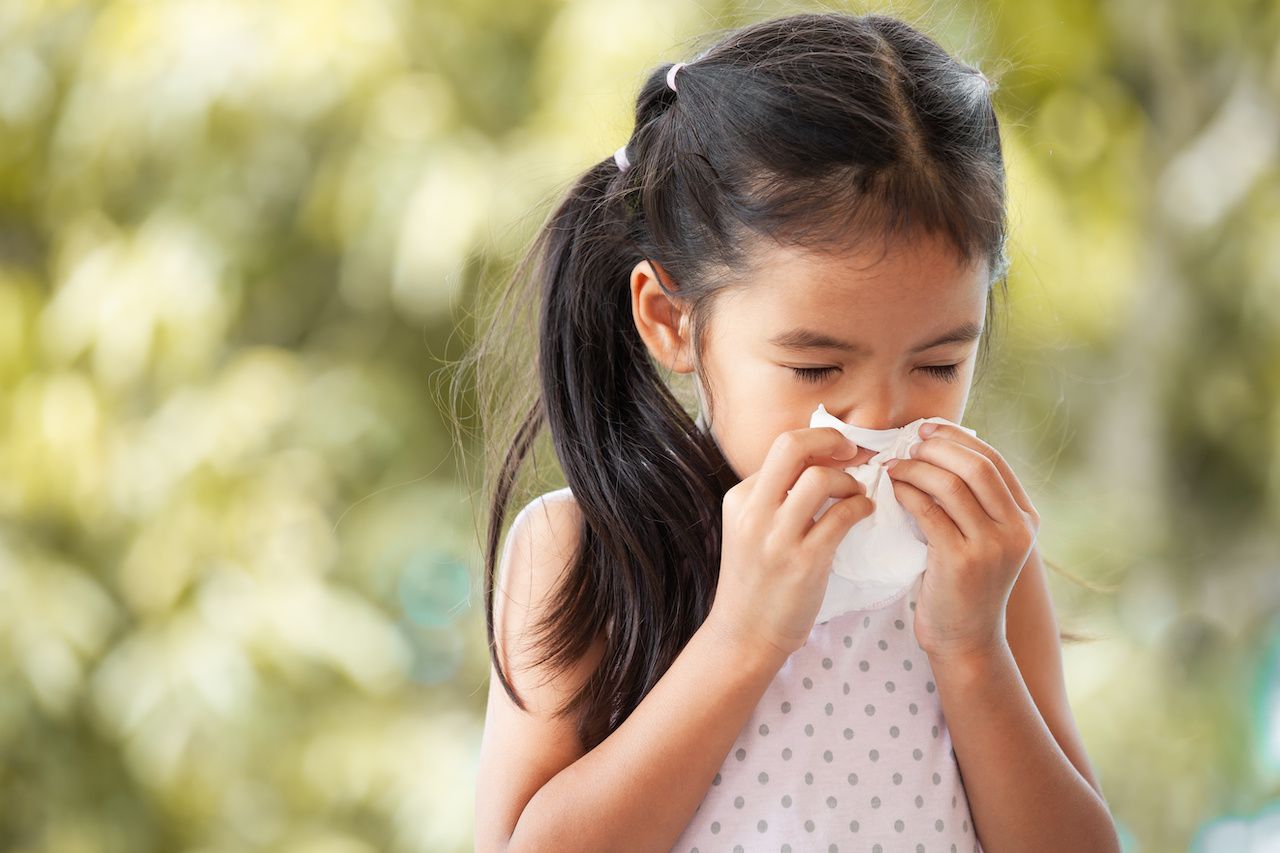- Center on Health Equity & Access
- Clinical
- Health Care Cost
- Health Care Delivery
- Insurance
- Policy
- Technology
- Value-Based Care
Genetics and Environment Both Play a Role in Childhood Allergy Progression
Genetics and environment both influence allergy risk, but environmental factors play a stronger role in the progression of allergic disease.
Both genes and environmental factors play a role in the occurrence of allergic diseases, according to a new study in Translational Pediatrics.
Genetics and environment both influence allergy risk, but environmental factors play a stronger role in the progression of allergic disease.
Image credit: pingpao - stock.adobe.com

“Our prospective study found that a family history of allergy had no effects on [atopic dermatitis], allergic rhinitis, and wheezing between the twin groups,” wrote investigators, led by Jing Wang, from the department of pediatrics at Qilu Hospital of Shandong University in China. “Instead, environmental factors influenced the development of allergic diseases.”
The “allergic march” begins with infantile atopic dermatitis at 1 to 3 months of age. This is typically linked to food allergies, which progress during the first year of life. A prior birth cohort study found that infantile atopic dermatitis is associated with the development of asthma and rhinitis by 7 years old.
Investigators sought to understand the factors leading to the development of allergic diseases. They conducted a prospective clinical study of 80 identical and fraternal twins aged ≤ 4 years to identify the potential differences in environmental and genetic factors that contribute to allergy progression; data was collected via a 48-month questionnaire. In this study, identical and fraternal twins had similar rates of 60% to 80% for inhalation allergens at 2 years old.
The study reported no statistically significant differences between identical and fraternal twins in terms of gender, gestational age, history of asphyxia, feeding methods, and birth weight.
Compared with fraternal twins, identical twins had a significantly greater incidence of atopic dermatitis (100% vs 17%; P < .001), rhinitis (100% vs 20%; P < .001), and food allergy (100% vs 27%; P < .001). Wheezing had no significant difference in identical vs fraternal twins (80% vs 83%; P > .05).
Wang and colleagues discovered that, from 6 months to 48 months, the incidence of atopic dermatitis decreased (80% to 16.7% in identical twins; 50% to 26% in fraternal twins), and the incidence of rhinitis (5% to 16.7% in identical twins; 3% to 44% in fraternal twins) and wheezing (10% to 41.7% in identical twins; 0% to 26% in fraternal twins) increased.
Additionally, identical twins had a significantly greater consistency of inhaled allergens (100% vs 80%; P < .001; effect size, 0.619) and positive food allergens (86% vs 57%; P < .001; effect size, 0.597).
Investigators also analyzed the incidence of allergic diseases based on specific factors. For instance, among identical twins, they found atopic dermatitis and wheezing were more frequent in those who were male, had a birth weight of < 2500 g, and had another sibling (P < .05). Rhinitis in identical twins was more frequent among those who lived in a bungalow-style home, had pets, and had carpeting (P < .05).
As for fraternal twins, atopic dermatitis was more frequent in those who were born < 37 weeks gestation and had flowers or plants in the house (P < .05). Rhinitis in fraternal twins was more frequent in those born < 37 weeks gestation, with a history of neonatal asphyxia, and who lived in a smoking household (P < .05). Wheezing in fraternal twins was more frequent in those born < 37 weeks gestation, with a history of neonatal asphyxia, with central heating, and who lived in a smoking household (P < .05).
“The occurrence of allergic diseases in children is not only related to genes, but also influenced by environmental factors, and the influencing factors of allergic diseases in identical and fraternal twins are not the same,” investigators concluded.
References
- Wang J, Wang L, Liu S, Han Y, Adamko DJ, Cheng L, Gao J, Zhang Y, Ma X, Cao A. A prospective clinical study of allergy progression in identical and fraternal twin pairs of children. Transl Pediatr. 2025 Feb 28;14(2):298–310. doi: 10.21037/tp-2024-615. Epub 2025 Feb 25. PMCID: PMC11921276.
- Shen CY, Lin MC, Lin HK, Lin CH, Fu LS, Fu YC. The natural course of eczema from birth to age 7 years and the association with asthma and allergic rhinitis: a population-based birth cohort study. Allergy Asthma Proc. 2013 Jan-Feb;34(1):78-83. doi: 10.2500/aap.2013.34.3625. PMID: 23406940.
